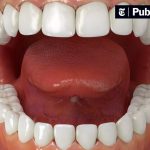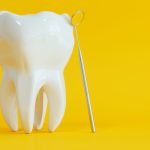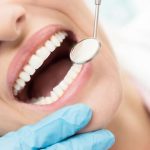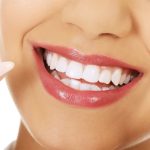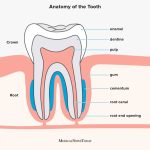Discovering Eye Teeth: Their Function, Development, and Common Problems

The human dental structure is a complex system that consists of different types of teeth, each serving its unique purpose. Among them, eye teeth are a vital component that deserves special attention. Eye teeth are the pointed teeth located between the incisors and premolars, also known as canine teeth. These teeth not only enhance the aesthetic appeal of a smile but also play a significant role in the overall oral health. Understanding the function, development, and common problems of eye teeth can help individuals take better care of their dental health and maintain a beautiful smile. Eye teeth are essential for biting and tearing food, especially meat. They are also crucial in speech, as they help in the proper pronunciation of certain sounds. Moreover, eye teeth play a vital role in maintaining the shape and structure of the face. They provide support to the lips and cheeks and prevent them from sinking inward, causing a sunken appearance. Eye teeth development begins during childhood and continues through adolescence, making it crucial to monitor their growth and address any issues early on. In this article, we will delve deeper into the function, development, and common problems of eye teeth, providing readers with valuable insights and knowledge to help them take better care of their dental health.
Eye teeth, also known as canine teeth, are the pointed teeth located next to the incisors in the human mouth. These teeth are named \eye teeth\ because they are positioned directly below the eyes, giving them the appearance of being able to pierce through whatever they bite. Eye teeth play an important role in biting and tearing food, as well as providing support for the lips and cheeks. They are also important for the overall structure of the mouth and face, as they help to maintain the proper alignment of other teeth. Typically, eye teeth begin to develop in early childhood and continue to grow until the late teenage years. However, problems such as impacted or missing eye teeth can occur, leading to issues with bite, speech, and facial appearance.
The eye teeth, also known as canine teeth, play a crucial role in dental health. These teeth are situated at the corners of the mouth, and they serve a vital role in biting and tearing food. They act as anchors for the jaw, providing stability and support for the other teeth. Eye teeth also play a vital role in the development of a person’s facial structure, giving the face a more symmetrical and attractive appearance. However, if these teeth are not properly cared for, they can be susceptible to a range of dental problems, including decay, gum disease, and even tooth loss. Therefore, it is essential to maintain good oral hygiene practices, including regular brushing and flossing, to ensure the longevity and health of the eye teeth and overall dental health.
Function of Eye Teeth
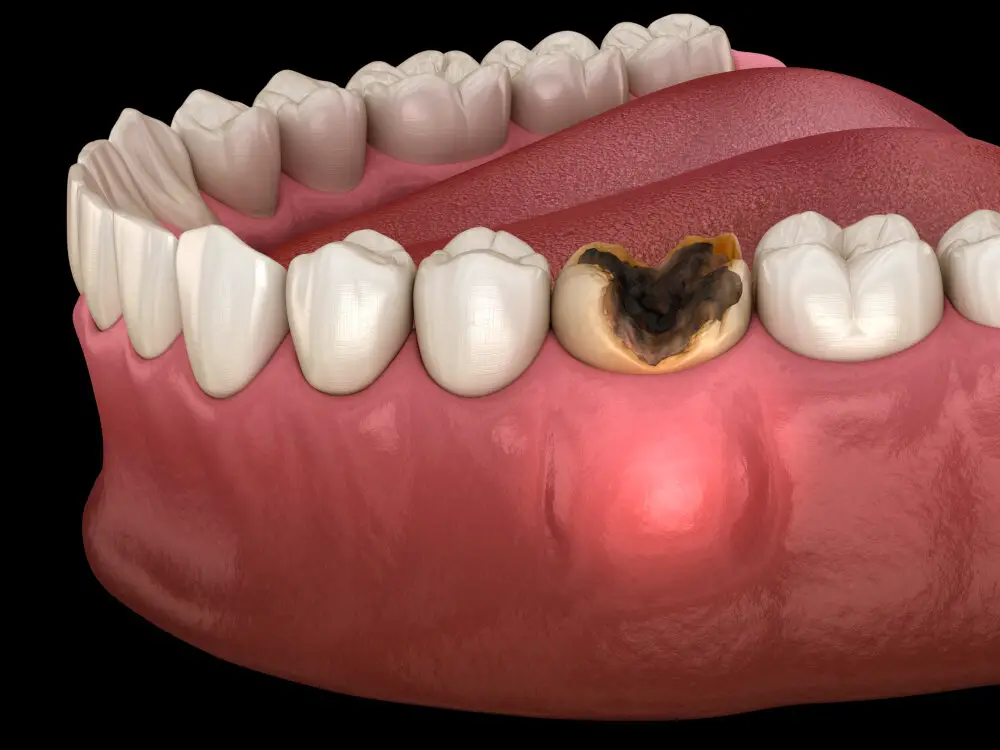
Eye teeth, also known as canine teeth, are the sharp, pointed teeth located in the front of the mouth beside the incisors. These teeth serve several important functions in the human mouth. One of their primary roles is to help with biting and tearing food. Eye teeth are designed with a pointed tip and a long, sharp edge that can easily cut through tough foods like meat and fibrous vegetables. This makes them essential for the proper cutting and chewing of food, which is a crucial part of the digestion process. Another important function of the eye teeth is to support the structure of the mouth and face. These teeth are larger and stronger than the other teeth in the mouth, and they help to distribute the force of biting and chewing evenly across the jaw. This helps to prevent damage and wear to other teeth in the mouth, as well as reducing the risk of jaw pain or injury. Additionally, the eye teeth play a key role in the development of the facial structure, supporting the cheeks and lips and contributing to a person’s overall appearance. Despite their importance, however, eye teeth can also be prone to a variety of problems, including decay, damage, and misalignment, which can cause discomfort and affect their ability to function properly.
Eye teeth, also known as canine teeth, play a crucial role in the process of biting and tearing food. These teeth are located at the corners of the mouth, and are characterized by their sharp, pointed shape. The shape of the eye teeth is specifically designed to assist in the process of tearing and shredding food, particularly meats and other tough foods that require a significant amount of force to break down. Additionally, eye teeth assist in the overall process of digestion, as they help to break down food into smaller, more manageable pieces that can be more easily digested by the stomach. Despite their importance, eye teeth can be susceptible to a variety of common problems, including cavities, gum disease, and decay, which can impact their function and overall health.
Eye teeth, also known as canines, are a vital component of the dentition structure, located between the incisors and premolars in the human mouth. Compared to other teeth, eye teeth are generally sharper and more pointed, designed to tear and shred food. They are also longer than other teeth, and their roots are typically deeper, providing a stronger foundation for their function. Eye teeth are essential for proper bite alignment, as they serve as the first point of contact when the jaws close. Their development is significant, as they usually emerge between the ages of 11 and 12, replacing the primary canines. However, their growth can sometimes be disrupted, leading to various common problems such as impaction, eruption, and overcrowding.
Development of Eye Teeth

Eye teeth, also known as canine teeth, are the pointed teeth located between the incisors and premolars in both the upper and lower jaws. These teeth are important for biting and tearing food, as well as for aesthetic purposes. The development of eye teeth begins during fetal development, with the formation of tooth buds that will eventually grow into fully-formed teeth. Eye teeth typically erupt between the ages of 16 and 20 months, although this can vary from child to child. During eruption, the eye teeth push through the gums and gradually move into their final positions in the mouth. The development of eye teeth can be affected by a variety of factors, including genetics, nutrition, and dental hygiene. For example, if a child’s parents have small or misaligned eye teeth, the child may also develop similar teeth. Additionally, poor nutrition or oral hygiene can lead to delayed or abnormal tooth development. Common problems associated with eye teeth include impaction, which occurs when a tooth fails to erupt fully, as well as overcrowding and misalignment of teeth. These issues can cause pain, discomfort, and difficulty biting and chewing, and may require orthodontic treatment or other forms of dental intervention.
Eye teeth, also known as canine teeth, play an essential role in our mouth’s overall function. These teeth typically develop between the ages of 11 and 12 years old, after most of our other teeth have already grown in. Eye teeth are the longest and sharpest teeth in our mouths, and they help us tear and shred food. They also play a crucial role in speech and maintaining the shape of our faces. However, some people may experience developmental issues with their eye teeth, such as impaction or delay in eruption, which can lead to discomfort and other oral health concerns. Regular dental check-ups and proper oral hygiene can help prevent and address any problems with eye teeth.
The eruption process of eye teeth, also known as canine teeth, is a unique and fascinating event. These teeth are the longest in the human mouth and have a pointed shape that resembles a fang. The eruption process begins around the age of 11-12 years and can take up to two years to complete. During this time, the teeth move through the gums and into their designated position. As the eye teeth grow, they push against the adjacent teeth, causing discomfort and sometimes pain. However, once they have fully erupted, they serve a crucial function in the mouth, helping to tear and grip food. Despite their importance, eye teeth can be prone to several common problems such as impaction, infection, and decay. It is essential to maintain good oral hygiene and seek prompt treatment if any issues arise.
The development of eye teeth, also known as canine teeth, may be affected by various factors. Genetics plays a significant role in determining the size and shape of these teeth, as well as their alignment within the jaw. Malnutrition and poor oral hygiene during early childhood may also hinder the proper development of eye teeth. Additionally, certain medical conditions, such as cleft palate and hormonal imbalances, may impact the growth and positioning of these teeth. Trauma to the mouth or jaw can also cause damage to the eye teeth, affecting their development and function. It is important to monitor the growth and development of these teeth to ensure proper oral health and function.
Common Problems with Eye Teeth
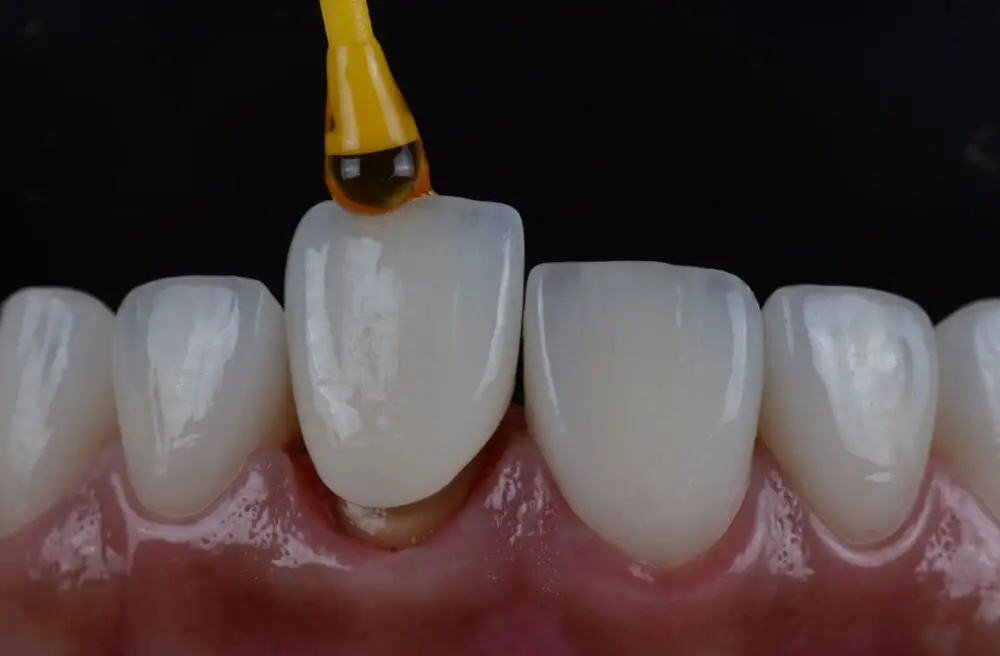
Eye teeth, also known as canine teeth, are the pointed teeth located next to the incisors in both the upper and lower jaws. While they serve a crucial role in gripping and tearing food, they are also prone to several problems that can cause discomfort and affect the overall health of your mouth. One of the most common issues is impaction, where the tooth fails to emerge fully from the gum line and becomes trapped. This can cause pain, swelling, and infection, and may require surgical extraction to alleviate. Another common problem is malocclusion, where the eye teeth grow in at an angle or position that affects the alignment of the other teeth. This can cause issues with chewing, speaking, and even breathing, and may require orthodontic treatment to correct. Additionally, eye teeth are also vulnerable to decay and damage, just like any other tooth in your mouth. If left untreated, cavities and cracks can lead to infection and tooth loss, which can have a significant impact on your overall oral health. It’s important to maintain good dental hygiene practices and visit your dentist regularly to prevent and address any issues with your eye teeth before they become more serious. With proper care, your eye teeth can continue to serve their important function and keep your smile healthy and beautiful.
Eye teeth, also known as canine teeth, are a crucial component of our dentition, playing a significant role in the aesthetic appearance of our smile and the functionality of our bite. However, they are also prone to various problems that can impact our oral health. Impaction is a common issue with eye teeth, where they fail to emerge from the gums, causing discomfort and even infection. In addition, crowding can occur when there is not enough space in the jaw for the eye teeth to come in properly, leading to misalignment and potential damage to adjacent teeth. It is essential to address these issues promptly to prevent further complications and ensure optimal dental health.
The common problems associated with eye teeth such as impaction, crowding, and abnormal growth can significantly affect dental health. Impacted eye teeth can cause pain, swelling, and infection, leading to gum disease and tooth decay. Crowded teeth can make cleaning difficult, resulting in plaque buildup and periodontal disease. Abnormal growth of eye teeth can also lead to malocclusion, which can cause temporomandibular joint (TMJ) disorders and chewing difficulties. Additionally, eye teeth that are missing or not properly aligned can affect the balance of the bite, leading to uneven wear on teeth and potential damage to the jaw joint. Therefore, it is crucial to address any problems with eye teeth promptly to maintain healthy dental function and prevent further complications.
There are various treatment options available for common eye teeth problems. For instance, if a patient has impacted eye teeth, a dentist may recommend exposing and bonding the tooth to the bracket with orthodontic treatment. If a patient has overcrowded teeth, braces or clear aligners can be used to shift the teeth into their proper position and create more space for the eye teeth. In cases where a patient has a damaged, infected, or decayed eye tooth, a root canal, crown, or extraction may be necessary. Additionally, if a patient has a missing eye tooth, a dental implant or bridge can be used to replace the tooth and restore function to the mouth. It is important to consult a dental professional to determine the best treatment option for individual eye teeth problems.
Proper Care for Eye Teeth

The eye teeth are the pointy teeth on either side of your upper jaw. These teeth are also known as canine teeth due to their resemblance to a dog’s canines. Eye teeth are essential for chewing food, and they also play a critical role in your smile. Therefore, proper care of eye teeth is essential to maintain your oral health and overall appearance. Regular brushing and flossing are necessary to keep your eye teeth clean. It is also vital to visit your dentist regularly for cleaning and checkups. Your dentist can identify any potential problems early on and recommend treatments to prevent further damage. If you experience any pain or discomfort in your eye teeth, make an appointment with your dentist immediately. Another crucial aspect of proper eye teeth care is protecting them from damage. Eye teeth are more susceptible to chipping and cracking than other teeth due to their shape and location. Therefore, it is vital to wear a mouthguard if you play sports or engage in any activity that could result in impact to your face. Avoid using your teeth as tools to open packages or bottles, as this can also lead to damage. If you grind your teeth at night, talk to your dentist about a mouthguard to prevent wear and tear on your eye teeth and other teeth. By taking care of your eye teeth, you can ensure they remain healthy and functional for many years to come.
Maintaining healthy eye teeth is crucial for overall dental health. Regular brushing and flossing are essential to keep them free from plaque and prevent decay. Additionally, it is recommended to limit the intake of sugary and acidic foods and beverages, as they can erode the enamel of the teeth. Chewing on hard and crunchy foods, such as apples and carrots, can help to keep the teeth clean and strengthen them. It is also important to visit the dentist regularly for check-ups and professional cleanings, as they can detect any early signs of dental problems and provide effective treatments to prevent them from worsening. By following these tips, one can ensure healthy, strong, and functional eye teeth for a lifetime.
Diet and lifestyle factors play a crucial role in maintaining the health of eye teeth. A diet high in sugar and carbohydrates can increase the risk of cavities and decay, which can affect the enamel of the eye teeth. Additionally, a lack of proper oral hygiene practices such as brushing and flossing can lead to plaque buildup, which can also contribute to tooth decay. Smoking or using tobacco products can cause staining and discoloration of the teeth, including the eye teeth. On the other hand, a balanced diet rich in calcium, vitamin D, and other essential minerals can promote healthy teeth and strong enamel. Regular dental check-ups and cleanings are also essential in preventing and identifying any potential issues with eye teeth health. A healthy lifestyle, including regular exercise and stress management, can also promote overall oral health and reduce the risk of developing oral health problems.
The article \Discovering Eye Teeth: Their Function, Development, and Common Problems\ delves into the important role that eye teeth play in our oral health. Eye teeth, also known as canine teeth, are essential for biting and tearing food. They also help maintain the structure of our facial features and assist in speech. The article highlights the different stages of eye teeth development, from birth to adulthood, and the unique challenges that can arise during each phase. Common problems associated with eye teeth include impaction, overcrowding, and infections. The article also provides useful tips for maintaining healthy eye teeth, such as regular brushing, flossing, and dental check-ups. Overall, this article serves as a comprehensive guide for understanding the importance of eye teeth in our overall dental health.
Seeking professional dental care for eye teeth problems is crucial to maintain good oral health. Eye teeth, also known as canine teeth, play a significant role in biting and tearing food, giving support to facial structure, and maintaining a healthy smile. Any issues related to eye teeth such as infection, misalignment, or decay can cause severe pain and discomfort. If left untreated, these problems can lead to more significant issues like gum disease, tooth loss, or even affect overall health. A dental professional will be able to diagnose and treat any eye teeth-related issues promptly, preventing further complications. Therefore, regular dental checkups are essential for maintaining the health of your eye teeth and overall oral health.
Conclusion
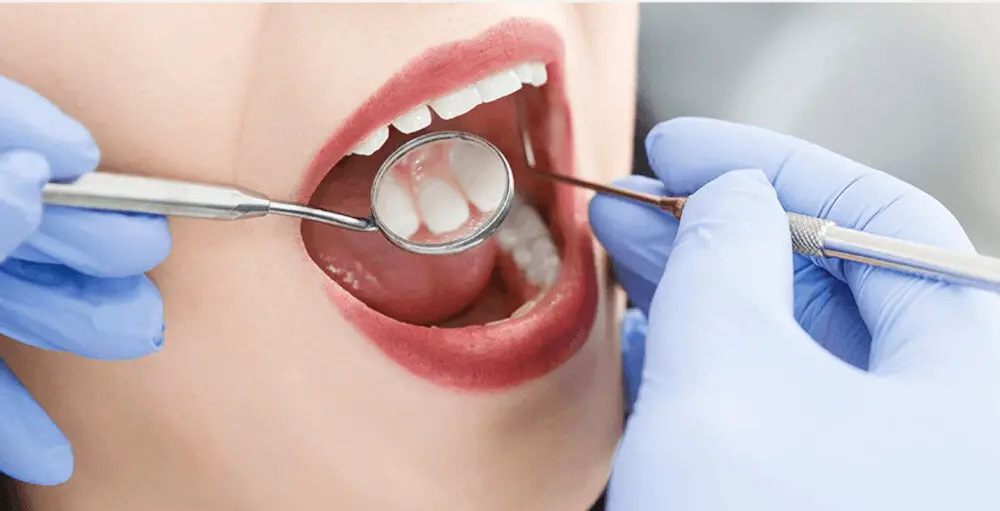
In conclusion, eye teeth, also known as canine teeth, play a crucial role in our oral health and overall appearance. From their development in infancy to their function in adulthood, eye teeth are important for biting, tearing, and supporting the structure of our mouth. However, common problems such as impaction, crowding, and decay can affect their health and require prompt attention from dental professionals. By understanding the function, development, and common problems related to eye teeth, we can maintain good oral health and a confident smile.
